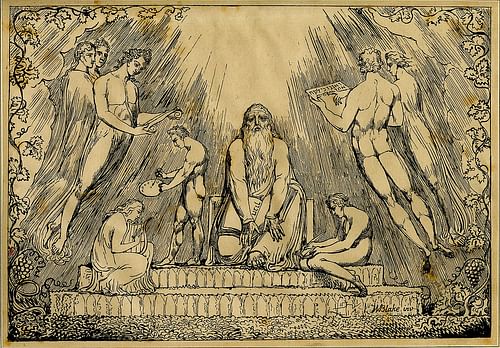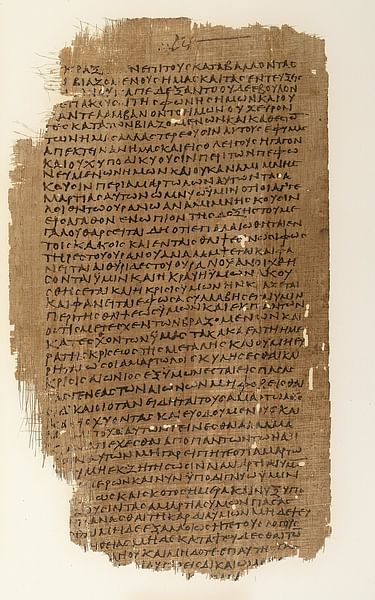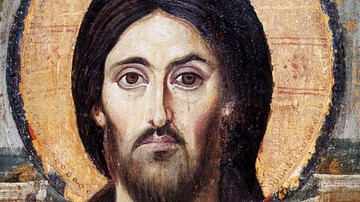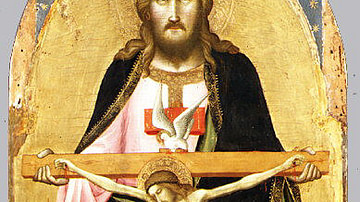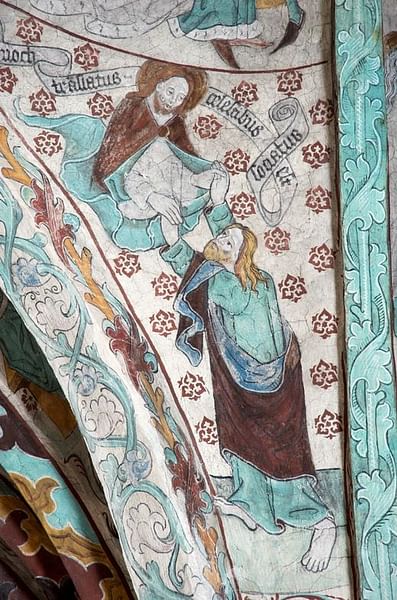
In the book of Genesis in the pre-flood period, Enoch was the son of Jared and the father of Methuselah. There are few details about Enoch. We learn that he lived 365 years, and then Enoch "walked faithfully with God; then he was no more, because God took him away" (Genesis 5:24). This cryptic note was interpreted to understand that Enoch did not die a physical death but was taken by God for continued existence in heaven.
Within the traditional texts, he is not referred to again, but he became a major figure during the Second Temple Period (450 BCE - 70 CE). If you have read the gospels, both the concept and the reference to Jesus of Nazareth as the "son of man" is drawn from the books of Enoch.
The Books of the Prophets
Israel suffered several major disasters throughout its history. In 722 BCE, Assyria conquered the Northern Kingdom of Israel. The conquerors switched populations, moving their own people into the region and this is when ten of the twelve tribes of Israel were lost to history. In 587 BCE, the Neo-Babylonian Empire conquered the Southern Kingdom of Judah, destroying Jerusalem and the Temple complex. The books of the Prophets blamed these disasters on the sins of the people, particularly the sin of idolatry.
At the same time, the Prophets offered a message of hope., that the God of Israel would intervene in human history one final time, raising up a messiah figure ("anointed one") to lead the armies of Israel against the nations. At that time, Israel would be restored to its former glory and God’s original plan for humans (the Garden of Eden) would be established on earth. The shorthand phrase for this conviction was "the kingdom of God on earth."
In 330 BCE, Alexander the Great (r. 336-323 BCE) conquered the regions of the Mediterranean Basin. Upon his death, his generals divided his empire during the Wars of the Diadochi. In 167 BCE, the Syrian king Antiochus Epiphanes IV (175-164 BCE) ordered the extinction of Jewish customs (their religion). The Jews, under the leadership of a family known as the Maccabees, rose against them and eventually drove them out in the Maccabean Revolt.
Not all Jews agreed with the ruling house of the Maccabees (the Hasmoneans) and so we have the formation of various groups or sects of Jews: the Pharisees, Sadducees, Essenes, and Zealots. By 63 BCE, Rome had conquered Israel, and many of these groups felt the urgency that God should intervene now. There was a renewed interest in the details of the prophetic books, updated to reflect the current situation. Additional texts were written, recalling ancient figures of Israel to interpret views on the final days.
By the Second Temple period, there were no more traditional Prophets of Israel. Instead, we have the development of seers, men who experienced out-of-body journeys to heaven. While there, they were shown secrets of the future intervention by God. 'Apocalypse' is the term for a disclosure, the revealing of hidden things. As the revelations concerned the final days (eschaton in Greek), scholars apply the term 'apocalyptic eschatology' to the literature of this period. To convey credibility, the texts were always written in the name of an individual who was known to be in heaven. The figure of Enoch became popular as the source of the revelations.
The Books of Enoch
1, 2 and 3 Enoch claimed that when he was taken up by God, he became the guardian of the heavenly treasures, head of the archangels, and served as God’s attendant at his throne. These texts have subheadings, the Similitudes of Enoch, the Book of the Parables of Enoch, the Book of the Giants, the Book of Dream Visions, and the Book of the Watchers. He is also mentioned in Jubilees and the Book of Sirach.
Genesis 6:1-4 related a somewhat cryptic story:
When human beings began to increase in number on the earth and daughters were born to them, the sons of God saw that the daughters of humans were beautiful, and they married any of them they chose. Then the Lord said, "My Spirit will not contend with humans forever, for they are mortal, their days will be a hundred and twenty years." The Nephilim were on the earth in those days—and also afterward—when the sons of God went to the daughters of humans and had children by them. They were the heroes of old, men of renown.
This passage provides the context for the next story, the evil that was unleashed on the earth and why God sent the flood to cleanse it. It is in the Enoch literature that we get the specific details of why this mixing with humans was so terrible. The terms 'watchers' and 'giants' are applied interchangeably. We can also understand this passage as polemical, a critique of Israel’s neighbors who claimed that many of their gods had mated with human women. In Judaism, the divine realm and the human realm always remained distinct.
The "sons of God" were understood as angels. According to the Enoch literature, these angels exploited human beings and turned them into slaves. Enoch then learned that the leader of the watchers also taught humans the arts of metallurgy and cosmetics, which is why he was cast out:
And Azazel taught men to make swords and knives and shields and breastplates; and made known to them the metals [of the earth] and the art of working them; and bracelets and ornaments; and the use of antimony and the beautifying of the eyelids; and all kinds of costly stones and all coloring tinctures. And there arose much godlessness, and they committed fornication, and they were led astray and became corrupt in all their ways. (1 Enoch 8:1-3)
Azazel became the demon to which the scapegoat was sent in the desert in the ritual of Yom Kippur, to atone for the sins of the nation. This figure was also incorporated into the traditions concerning the story of Satan, or the Devil, being cast out of heaven.
And the Lord said to Michael [the Archangel] . . .bind them fast for seventy generations in the valleys of the earth, till the day of their judgement and of their consummation, till the judgement that is for ever and ever is consummated. In those days they shall be led off to the abyss of fire: and to the torment and the prison in which they shall be confined forever. (1 Enoch 10:11-15)
The Figure of Enoch in Early Christianity
Enoch became a model figure in early Christianity in two ways:
- by absorbing the "son of man" traditions
- as validation that Jesus Christ was a pre-existence, divine figure
As recounted in 1 Enoch, on one of his journeys he described the God of Israel as well as a figure standing next to his throne:
And there I saw the one to whom belongs the time before time, and his head was white like wool. With him was another being, whose countenance had the appearance of a man, and his face was full of graciousness, like one of the holy angels. I asked the angel who went with me concerning that son of man and who he was, and whence he was, and why he went with the one to whom belongs the time before time. He answered and said to me: "This is the son of man who has righteousness, with whom dwells righteousness, and who reveals all the treasures of that which is hidden, because the Lord of the spirits has chosen him, and whose lot has the pre-eminence before the Lord of the spirits in uprightness forever. This son of man whom you have seen shall raise up the kings and the mighty from their seats and the strong from their thrones and shall loosen the reins of the strong and break the teeth of the sinners." (46:1-4)
And at that hour that Son of Man was named in the presence of the Lord of the spirits, and his name before the one to whom belongs the time before time. Yes, before the sun and the signs were created, before the stars of the heaven were made, his name was named before the Lord of the spirits. He shall be a staff to the righteous whereon to stay themselves and not fall, and he shall be the light of the Gentiles and the hope of those who are troubled of heart. All who dwell on earth shall fall down and worship before him and will praise and bless and celebrate with song the Lord of the spirits. (48:2-5)
This son of man figure became an important element in the final days when God would institute his kingdom. In the list of events that would occur in the final days, there would be a major battle between God’s forces and the nations. After the battle, all the dead would be raised and judged. The Son of Man was responsible for judging all humans.
Early Christians identified Jesus of Nazareth with the son of man figure. This explains the Christian claim of why Jesus had the power in his ministry to forgive sins on earth (an aspect that was traditionally held by God alone). The apocalyptic book of Daniel has a passage describing the final days:
In my vision at night I looked, and there before me was one like a son of man, coming with the clouds of heaven. He approached the Ancient of Days and was led into his presence. He was given authority, glory and sovereign power; all nations and peoples of every language worshiped him. His dominion is an everlasting dominion that will not pass away, and his kingdom is one that will never be destroyed. (7:13-14)
In Jesus’ trial before the Sanhedrin, the high-priest asked him:
"Are you the Messiah, the Son of the Blessed One?" "I am," said Jesus. "And you will see the Son of Man sitting at the right hand of the Mighty One and coming on the clouds of heaven." (Mark 14:61-62)
Divine Pre-existence
When early Christians first proclaimed that Jesus of Nazareth was the messiah predicted by the Prophets, the claim was problematic because elements of his ministry did not fit traditional concepts of the final days. The messiah was to be a warrior-king like King David, leading the Jews against their oppressors, in this case, Rome. At the same time, Jesus had been crucified by Rome; a dead messiah could not be effective.
In Paul’s communities, the concept of Jesus as the son of man placed him at the beginning of creation because the son of man preceded all creation:
The Son is the image of the invisible God, the firstborn over all creation. For in him all things were created: things in heaven and on earth, visible and invisible, whether thrones or powers or rulers or authorities; all things have been created through him and for him. He is before all things, and in him all things hold together. (Col. 1:15–17)
The idea from Enoch that the son of man would become "a light to the Gentiles" is found throughout the book of Isaiah. It was applied by Paul and the first Christian missionaries to argue for the admission of Gentiles without the ethnic Jewish identity markers of circumcision, dietary laws, and Sabbath observance. The fourth gospel of John utilized these ideas of the pre-existence of Christ with the claim that he was the logos, or the "word" of God, manifest in human form on earth.
The claim that Jesus had been resurrected from the dead and ascended into heaven utilized the model of Enoch. In the Acts of the Apostles, the stoning of Stephen verified the exaltation of Jesus. Right before Stephen died, he had a vision of Jesus in heaven "at the right hand of God" (Acts 7:55). In the letter to the Hebrews, the comparison is explicit:
By faith Enoch was taken from this life, so that he did not experience death: "He could not be found, because God had taken him away." For before he was taken, he was commended as one who pleased God. (11:5).
If early Christians had simply claimed that Jesus was now in heaven but would return to lead God’s final battle, that would cohere with many views in Second Temple Judaism. However, they transformed the traditional views of the messiah (a human, warrior king) by postulating a pre-existent, heavenly being who descended, became flesh, and then ascended to return in the final days.
Through Enoch and Daniel, early Christianity began to worship Jesus as a divine being, and this led to the later canonization of these ideas in what became the Christian concept of the trinity. Jesus and God were declared to be of the identical essence where both were responsible for creation. The concept of Jesus as the final judge was canonized in the Nicene Creed (325 BCE).
The Use & Dating of the Books of Enoch
References to elements of the Enoch literature were widespread in Christian circles in the first centuries. In the 2nd and 3rd centuries CE, the Church Fathers utilized them for the explanation of how evil corrupted the earth, the prophecies of the final days, and as validation of the pre-existence of Christ. But as the decades passed and the kingdom did not materialize, the end-time prophecies were placed in the future. In the interim, the Church became the ideal model of how to live in the kingdom. Neither the Jewish Scriptures nor the New Testament included any of the Enoch texts in their canon of accepted scripture. It was only in the archaeological discovery of ancient manuscripts (among the Dead Sea Scrolls, translations into Syriac, and Ethiopian texts) that scholars began to examine this material.
Many of the Books of Enoch did not survive in their original form. Scholars debate the timeframe of the texts and consider how and why they were edited over the centuries. The range of dates varies anywhere from 150 BCE to the 5th century CE. The later dating often argues for a Christian source, claiming that newer editions of Enoch were written to add further testimony to the son of man concept of Christ, which had already been developed.
In the modern fields of Second Temple Judaism and New Testament studies, the books of Enoch have become required reading (as well as other apocalyptic texts). Their importance is recognized in understanding concepts that were in the air during the historical context of the emergence of Christianity in the 1st century CE. The Enoch material validated the later claims of Christology or understanding the two natures of Christ, simultaneously divine and human. This was codified and canonized at the Council of Chalcedon in 451 CE.
There is now an international group of scholars founded in 2001 by Gabriele Boccaccini, the Enoch Seminar. It is devoted to advancing the research on Enoch and other writings from the period. The Enoch Seminar promotes graduate scholars with an opportunity to present research at international conferences.

